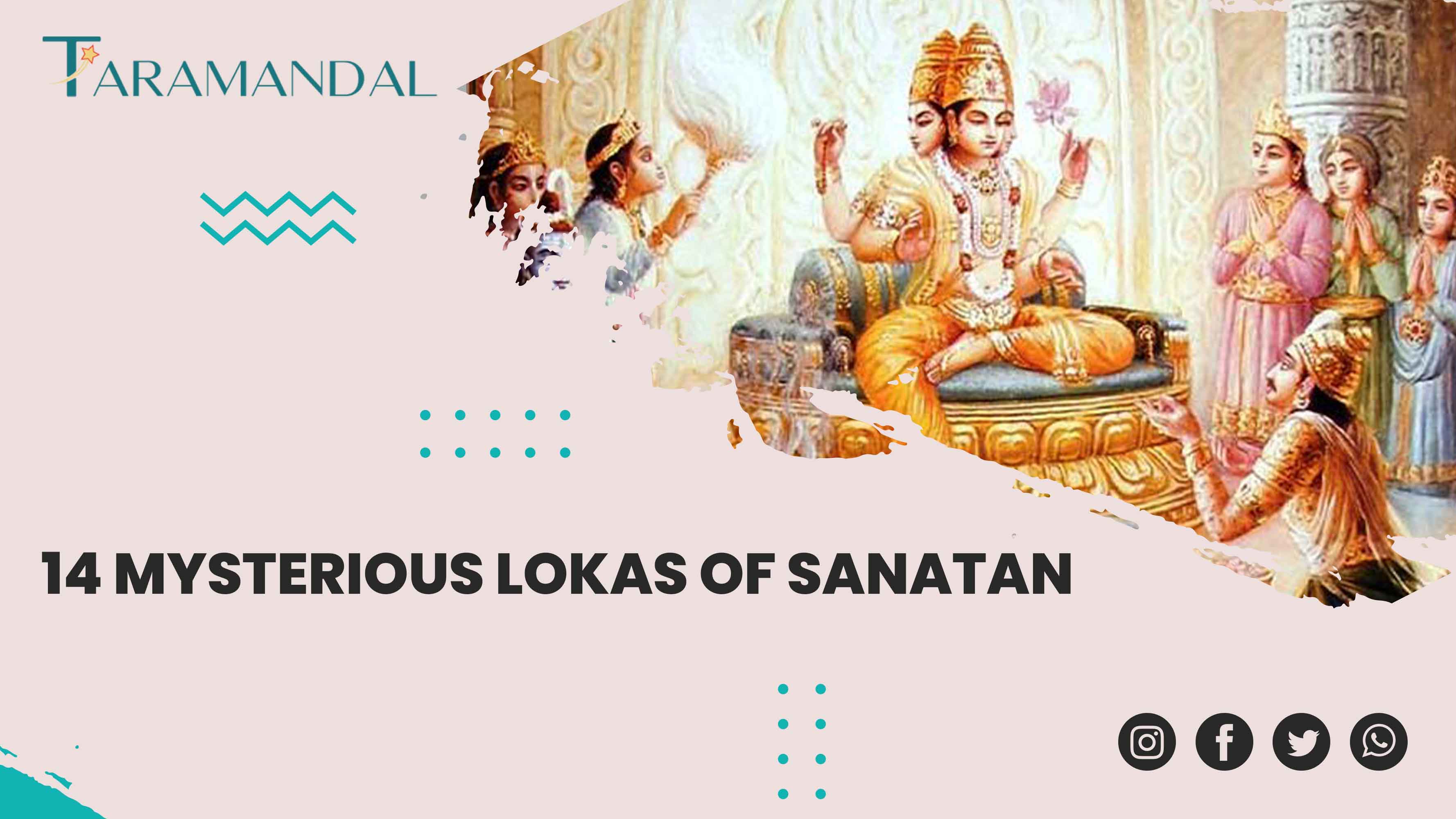on 2 years ago
14 Mysterious Lokas of Sanatan Dharma
Sanatan Dharma, also known as Hinduism, is one of the oldest and most diverse religions in the world. It has a rich and complex cosmology that describes various realms of existence, known as lokas. Lokas are not physical places, but states of consciousness that one can experience based on their karma and spiritual evolution. In this blog, we will explore the 14 lokas of Sanatan Dharma and their significance.
Higher Lokas
The higher lokas are the realms of the gods, sages, and liberated souls. They are characterized by bliss, knowledge, and purity. They are also temporary, as they are still within the cycle of birth and death (samsara). The higher lokas are:
Satyaloka: This is the highest loka, where Brahma, the creator god, resides. It is also called Brahmaloka or Satyadham. It is the abode of truth and liberation, where the souls who have attained moksha (freedom from samsara) dwell. It is said that one day of Brahma is equal to 4.32 billion human years1.
Tapoloka: This is the second highest loka, where the tapasvins (ascetics) and other deities live. They are called ayonija devatas, meaning they are not born from a womb. They practice severe penance and meditation to attain higher states of consciousness2.
Janaloka: This is the third highest loka, where the sons of Brahma and other enlightened beings reside. They are called manasaputras, meaning they are born from the mind of Brahma. They have great powers and wisdom2.
Maharloka: This is the fourth highest loka, where the great rishis (sages) and yogis live. They have attained mastery over the elements and can travel to any loka at will. They also have a long lifespan, but they are not immortal2.
Svarloka: This is the fifth highest loka, where Indra, the king of gods, and other devas (celestial beings) live. It is also called Swarga or Indraloka. It is a realm of pleasure and enjoyment, where one can fulfill their desires with ease. It is also the place where the righteous souls go after death to enjoy their good karma1.
Lower Lokas
The lower lokas are the realms of suffering, ignorance, and bondage. They are characterized by pain, fear, and darkness. They are also temporary, as they are still within the cycle of birth and death (samsara). The lower lokas are:
Bhuvarloka: This is the sixth highest loka, where some devas and spirits live. It is also called Antariksha or Pitraloka. It is a realm of air and space, where one can experience subtle phenomena and psychic powers. It is also the place where the ancestors (pitrs) dwell after death until they are reborn1.
Bhuloka: This is the seventh highest loka, where humans, animals, and plants live. It is also called Prithvi or Bhumandala. It is a realm of earth and water, where one can experience physical sensations and emotions. It is also the place where one can achieve liberation by following dharma (righteousness)2.
Atala: This is the first lowest loka, where Bala, a son of Maya (the architect of demons), rules. It is a realm of illusion and deception, where one can be seduced by various temptations and vices3.
Vitala: This is the second lowest loka, where Hataka, a gold-like substance that can fulfill any desire, is found. It is a realm of greed and lust, where one can be corrupted by material wealth and sensual pleasures3.
Sutala: This is the third lowest loka, where Bali, a benevolent demon king who was defeated by Vishnu in his Vamana avatar (dwarf incarnation), rules. It is a realm of generosity and devotion, where one can be rewarded by Bali for their good deeds3.
Talatala: This is the fourth lowest loka, where Maya, the architect of demons who can create anything by his magic, rules. It is a realm of creativity and innovation, where one can be inspired by Maya’s art and technology3.
Mahatala: This is the fifth lowest loka, where the nagas (serpent beings) live. They are ruled by Vasuki, the king of nagas who was used as a rope to churn the ocean of milk. It is a realm of wisdom and healing, where one can learn from the nagas’ secrets and remedies3.
Rasatala: This is the sixth lowest loka, where the daityas (giants) and danavas (demons) live. They are ruled by Virochana, the son of Prahlada, who was a devotee of Vishnu. It is a realm of power and ambition, where one can be challenged by the daityas’ and danavas’ strength and cunning3.
Patala: This is the seventh lowest loka, where the nivata-kavachas (invisible beings) live. They are ruled by Hiranyaksha, the brother of Hiranyakashipu, who was killed by Vishnu in his Varaha avatar (boar incarnation). It is a realm of fear and ignorance, where one can be tormented by the nivata-kavachas’ attacks and tricks3.
Conclusion
The 14 lokas of Sanatan Dharma are not mere locations, but levels of consciousness that one can experience based on their karma and spiritual evolution. They are also not fixed or permanent, but dynamic and changing according to the cosmic cycles. The ultimate goal of Sanatan Dharma is to transcend all the lokas and attain moksha, which is beyond any loka. Moksha is the state of absolute bliss, knowledge, and freedom that is the true nature of every soul.

